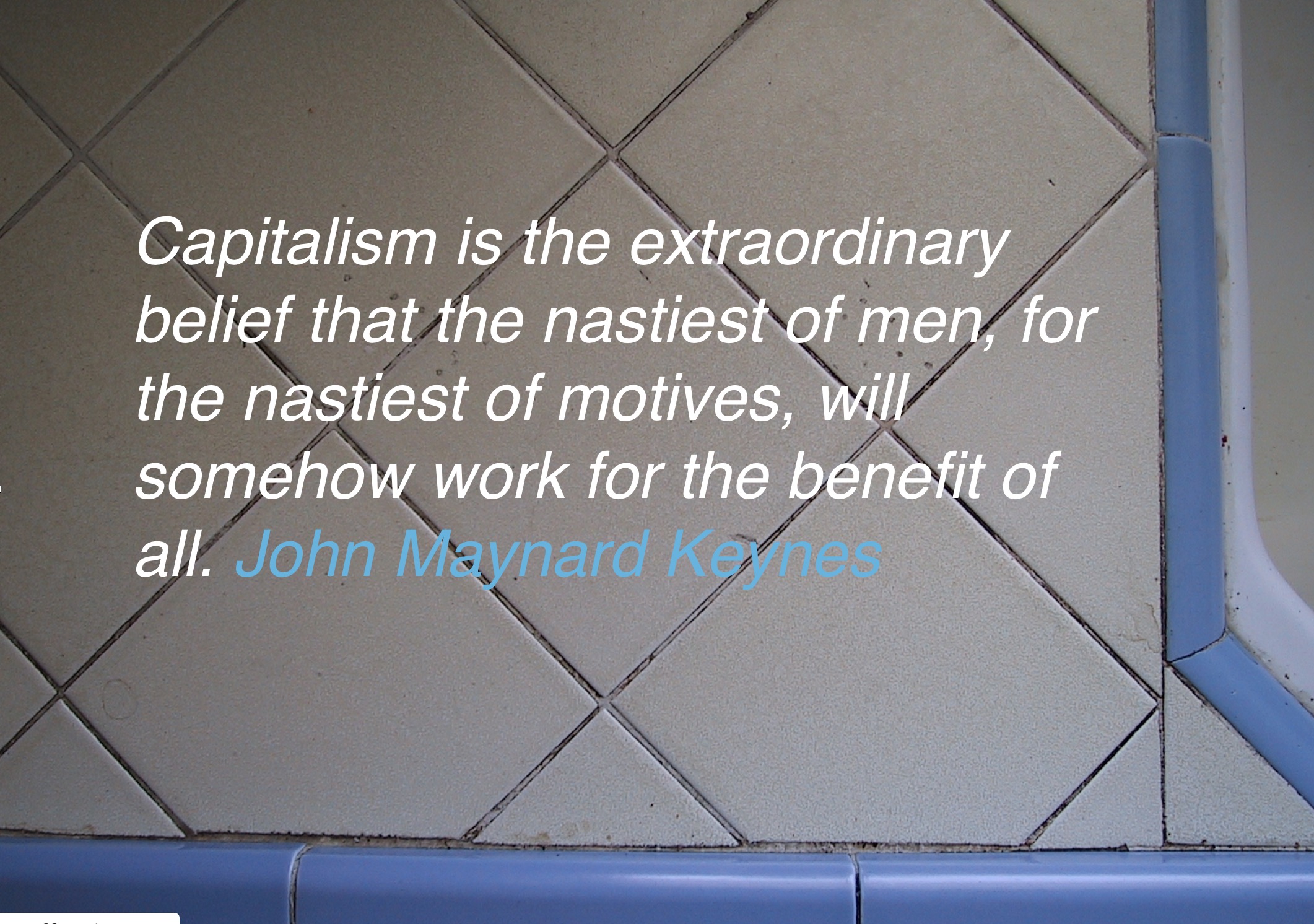
 I am sitting in the dark, the temperature is 36 degrees Celsius. I have a radio and an iPad. I’d like to say that I’m on holiday in the tropics, but I’m in my home in the outskirts of a city and the power has been out for a 6 hours now. I’m a Telstra customer, but there is no mobile or landline service – batteries not included in their infrastructure apparently. If I were part of a local generating group I would be cool and communicating. If my group had a similar power failure I would be drawing from other interconnected communities.
I am sitting in the dark, the temperature is 36 degrees Celsius. I have a radio and an iPad. I’d like to say that I’m on holiday in the tropics, but I’m in my home in the outskirts of a city and the power has been out for a 6 hours now. I’m a Telstra customer, but there is no mobile or landline service – batteries not included in their infrastructure apparently. If I were part of a local generating group I would be cool and communicating. If my group had a similar power failure I would be drawing from other interconnected communities.
My question is – who has heard of the 3rd industrial revolution, and has anyone seen a recent advance toward it in Australia?
 “Infrastructure projects means local schools and local communities; it’s not just about the mega-projects in Sydney. Infrastructure is about upgrades to hospitals, upgrades to school halls, sporting facilities.”
“Infrastructure projects means local schools and local communities; it’s not just about the mega-projects in Sydney. Infrastructure is about upgrades to hospitals, upgrades to school halls, sporting facilities.”
Gladys Berejiklian, who is set to be voted by the Liberal Party room as the state’s new premier today (Monday), speaking to The Saturday Telegraph, 20 Jan.
I can’t help taking a two way bet on this. On the one hand, it is definitely refreshing to see State Governments move off the mega projects. But as school halls were a focus of the last big infrastructure spend during the economic stimulus (Building the Education Revolution), it is strange that it should still top the list of local infrastructure needs. Has this list been seriously thought through or quickly cobbled together?
Your view – populism or good decision-making?

Adelaide Fringe Parade Credit: Tony Virgo
Much infrastructure serves temporary needs and is under-utilised, sports stadia for example and many arts facilities. But when we explicitly recognise that so many of our needs are time bounded, we can do better. Here are two examples.
In six weeks Adelaide will host its 56th Festival Fringe. Scheduled already are 1305 shows. This far exceeds the number of performing arts venues available, so other spaces are pressed into service including: several distilleries, the Adelaide airport, open air spaces such as the Botanic Gardens or the River Torrens, schools and colleges, sporting club rooms, hotels and cafes, shopping centres, churches and libraries, to name just some.
A festival is an explicit recognition of temporariness – and effective! During the Festival thousands of people will go to events who wouldn’t normally set foot in a gallery or a theatre. The ad hoc nature of the venue is often part of the attraction.
A temporary need doesn’t necessarily mean ‘once off’. I saw a laneway in Manila that, in the early morning, was filled with tables and chairs and provided breakfasts to workers. By 8 am, the tables and chairs had disappeared and the cooking equipment was packed away. The laneway became a packed car park. After 8 pm when all the cars and their owners had gone home, the tables and chairs came out again, this time with candles, and people gathered for conversation over a glass of something. Each of these three services were temporary, albeit continuing, and they shared the lane infrastructure.
Wanted: other examples of avoiding the need to build more infrastructure by recognising the temporary nature of needs? (Or the converse!)
 When Nick Greiner, a graduate of the Harvard Business School, became the Premier of New South Wales he declared that Government was ‘Big Business’. It was said that he required a signed commitment from each of his Ministers about the way they were to manage their portfolios and that to properly manage the assets of those portfolios was one of his requirements. I never saw one of these contracts so I cannot vouch for their existence but I do know that it was the Ministerial offices who were first in line for copies of New South Wales’ Total Asset Management Manual. At the time I thought that this ‘big business’ approach was breath of fresh air, particularly as it led Nick Greiner to override the advice of his head of Treasury and to be the first state adopter of accrual accounting. He wanted to be able to compare the performances of his state authorities with large private companies. They used accrual accounting so he figured that the government should as well. This was a good move for better management of public assets so I applauded it. But there are limits to the application of business principles to the work of government, as Greiner himself found out some years later when he was charged with corruption. It wasn’t corruption. What he did would have been considered good management practice if it had been done within a business context. But it wasn’t. (See: ‘An Act of Corruption?’by Michael Gleeson and published by the Sydney Australian Broadcasting Corporation, 1992)
When Nick Greiner, a graduate of the Harvard Business School, became the Premier of New South Wales he declared that Government was ‘Big Business’. It was said that he required a signed commitment from each of his Ministers about the way they were to manage their portfolios and that to properly manage the assets of those portfolios was one of his requirements. I never saw one of these contracts so I cannot vouch for their existence but I do know that it was the Ministerial offices who were first in line for copies of New South Wales’ Total Asset Management Manual. At the time I thought that this ‘big business’ approach was breath of fresh air, particularly as it led Nick Greiner to override the advice of his head of Treasury and to be the first state adopter of accrual accounting. He wanted to be able to compare the performances of his state authorities with large private companies. They used accrual accounting so he figured that the government should as well. This was a good move for better management of public assets so I applauded it. But there are limits to the application of business principles to the work of government, as Greiner himself found out some years later when he was charged with corruption. It wasn’t corruption. What he did would have been considered good management practice if it had been done within a business context. But it wasn’t. (See: ‘An Act of Corruption?’by Michael Gleeson and published by the Sydney Australian Broadcasting Corporation, 1992)
Business looks after its customers in order to make a profit. That is its job. It is not the job of business to care for the environment or for the social fabric of the community or for the damages it causes to others by its actions. It is not the job of business to act on behalf of the citizenry. That is the job of the government. So if government is doing business’ job – who is doing the government’s job? More specifically, who is ensuring that infrastructure is designed for the benefit of the community as a whole? Who can? Unless we know the ‘who’, the ‘what’, is a moot question.
 The value of “value management”, as Mark Neasbey, Director of the Australian Centre for Value Management, has illustrated in each of his previous posts, is in challenging what we think we know. In “The Power of ‘What if?'” he reveals how questioning a ‘given’ led to a radically different solution and a saving of hundreds of millions of dollars. Mark writes:
The value of “value management”, as Mark Neasbey, Director of the Australian Centre for Value Management, has illustrated in each of his previous posts, is in challenging what we think we know. In “The Power of ‘What if?'” he reveals how questioning a ‘given’ led to a radically different solution and a saving of hundreds of millions of dollars. Mark writes:
The types of things that are generally in a list of givens include:
- a law or regulation that has to be complied with;
- a technical performance requirement – be it a range or a set minimum or maximum number or a specific number – which can represent dimensions, volumes, rates and so on;
- a limiting boundary or barrier or a technical constraint;
- financial – e.g. an amount not to be exceeded or specified sources of funding, interest rates and so on;
- ownership and operating arrangements;
- authorities and delegations;
- a specific time or date that the asset is required or to be disposed of; and
- application of a particular process or corporate policy.
[Not an exhaustive but just some main examples.]
Now the thing about such givens is that we develop our options or solutions accepting these, rather than challenging them. So they tend not to come into creative thinking processes, accept as a limitation. Yet what happens if its not really a given, rather it turns out to be possible to change it – even if only to treat it as an assumption?
A recent rail project to develop expanded train maintenance and stabling facilities began with a given that the existing mainline was fixed – it could not be changed. By not allowing it to be moved the project solution involved some complex and expensive engineering and infrastructure to manage the train movements into and out of the depot, which are planned to eventually have headways as short as 30 seconds. [Driverless trains.] There was also an effect on how the layout of the expanded facility could be realised – it was not going to be as ideally efficient as possible to operate.
During a value engineering review however, the effects of not moving the mainline to the engineered solution became clearly a cause – not of concern – but for a better appreciation of the opportunity forgone to create a simpler, more elegant engineered solution and at a huge cost reduction.
The mainline alignment had been stated as a given by the client early in the planning process. So all of the initial feasibility work and preliminary concepts evolved based on that given. What subsequently emerged in the value engineering review was that this arose from a decision not to acquire a particular developed property adjacent to the line.
By asking the simple question “what if…?” the team was able to show a much better outcome was possible – not only at a lower capital cost, but with significant long term reduction in maintenance and operational risks to the network.
Two important highlight lessons to me are:
- Do you have an understanding of what is being labelled or taken as givens for your assets and asset strategies?
- Do you have a process to all testing and challenging of such givens so decision-makers are aware of their implications?
The Task today: An answer to either of Mark’s questions OR an example of a positive ‘What if?” challenge of your own.
 This is the fourth of a series of posts by Mark Neasbey, a director in the Australian Centre for Value Management examining the role of the planning budget. In the first Mark considered the differing attitudes that may be taken to strict adherence to the budget and in the next two, he gave examples of the problems this had created for a major teaching hospital and for a mining operation. In this, the last of the present series, Mark considers how a planning budget can be constructed and utilized to smooth the path of the capital budget.
This is the fourth of a series of posts by Mark Neasbey, a director in the Australian Centre for Value Management examining the role of the planning budget. In the first Mark considered the differing attitudes that may be taken to strict adherence to the budget and in the next two, he gave examples of the problems this had created for a major teaching hospital and for a mining operation. In this, the last of the present series, Mark considers how a planning budget can be constructed and utilized to smooth the path of the capital budget.
It’s good business practice to require planning for asset projects to look well ahead of the short-term i.e the current financial reporting period. This is because assets typically last many years and impose long-term costs to the business or government service.
Good practice also involves life-cycle planning around the asset project – what it costs to establish, what needs to be spent to keep it operating, periodic costs for replacement and renewal of plant and equipment and also periodic refurbishment necessary to sustain functionality, safety, image etc. This extends to considering disposal – when an asset is no longer needed – what has to be done to get rid of it. This principle applies equally to physical assets and soft assets such as computer software or systems.
So when an initial concept is proposed, what sort of things need to be addressed and what’s the significance of these to the budget?
Well a key starting point has to be determining its purpose – what is the asset supposed to do? What are the business or service functions that the asset must accommodate or support? Why can’t these functions be undertaken some other way, without the need for the asset project?
These questions can’t be answered without research, we need to test and clarify the scope of the project so we can set a reasonable capital budget. That means we have to start with a planning budget so the planning and analysis work can be done to decide a) the functions that the organisation needs to deliver; b) the options that should be considered for delivering those functions – including non-asset strategies; c) determine the relative merits of the options – key pros and cons, including business (service delivery) risks.
 This post by Mark Neasbey, a Director of the Australian Centre for Value Management, is the third in a series of posts on the role of the capital budget in infrastructure decision making. In this post Mark examines the issues facing a mine expansion.
This post by Mark Neasbey, a Director of the Australian Centre for Value Management, is the third in a series of posts on the role of the capital budget in infrastructure decision making. In this post Mark examines the issues facing a mine expansion.
The mining operation planned to do two things – one, expand its processing facilities to deliver increased product volumes to exacting customer specifications and two, change from road to rail transport for the whole journey to the port. An important third aspect of importance was getting the timing to market right to optimise prices and revenue.
A design for the processing facility had been prepared as well as a proposed rail alignment and rolling stock and operating schedule, which enabled a direct loading from the processing plant to train wagons. Existing operations relied on road transport to a rail transfer point some 40kms from the mine plant. This needed a large workforce and truck fleet and associated scheduling activities to meet shipping schedules at the port.
In this instance the key decisions that the company executives had to make were how much disruption to supply its customers could tolerate during the weeks needed to expand the plant and what would be the reliability of the delivery program to meet the market opportunity. Their value management study helped them to assess the options to refine both the plant design and the proposed rail arrangements in a way that minimised disruptions to the existing plant operations – so product could still flow to customers and continue to generate cash flow for the business. This was possible with a relatively minor increase in use of capital funds in the works at the plant with the rail works staging able to occur in parallel.
Whilst ongoing operating costs were reduced and volumes (and price yield) increased there were some additional asset implications. A significant reduction in the workforce enabled a portion of the accommodation, recreation etc. facilities to be redeployed to another operation and otherwise disposed of, reducing ongoing site maintenance cost.
Concluding Comments A budget for asset projects is expected to change during the life of the project – but why it changes and whether that is up or down is something that must be actively managed. It should not be blindly adhered to, let alone ignored. An asset project affects operating (recurrent) costs and potential revenue as well as capital, which are also important considerations for the decision-makers.
Question for today: What ‘take-away’ do you take away from this?
 This post is by Mark Neasbey, a Director of the Australian Centre for Value Management. In this post Mark presents an example of the dilemma of the different attitudes to planning budgets identified in his last post – and how they may be overcome.
This post is by Mark Neasbey, a Director of the Australian Centre for Value Management. In this post Mark presents an example of the dilemma of the different attitudes to planning budgets identified in his last post – and how they may be overcome.
A major teaching hospital complex had reached a decision point about what the project must deliver vs the projected capital cost. Hospital facilities undergo periodic redevelopment driven by substantive changes in health care practices (models of care) and capacity to service growing populations.
Here the planning involved creating new facilities and demolishing older buildings. The models of care and health outcome objectives were clearly defined and endorsed but were complicated by the arrangement of services across the campus and the recurrent cost constraints on the health services. Moving functions around to create space for the new facilities was one aspect and another was inefficient service delivery arrangements which had evolved over time and which were compromised by the inflexibility of the existing facilities.
So it was not possible and not appropriate to just focus on the capital project cost.
These tensions were recognised and tested in a value management study process that worked through the schematic design, the relationships between services across the campus and the sequence and timing of moving services around and into the new facilities. This made it clear that the space requirements and associated capital project budget exceeded the original estimate.
Question was: Should the budget be left where it was and the scope of the initial redevelopment stage reduced, or should the budget be increased to enable it to be made larger?
By focusing on the clinical outcomes and hospital operating (i.e. recurrent) costs it was clear to senior management that a change in scope for the first stage was vital. Adding extra floor space in stage 1 enabled significant reduction in operating costs ($10m p.a.). But the extra $30m for stage 1 also enabled the second stage to be a much lower cost development – a simpler demolition and a ‘cleaner’ new build.
Question for today: What ‘take-away’ do you take away from this?
 This post by Mark Neasbey, a director in the Australian Centre of Value Management is the first of four that looks into the role of the budget in infrastructure decision making.
This post by Mark Neasbey, a director in the Australian Centre of Value Management is the first of four that looks into the role of the budget in infrastructure decision making.
We are about to undertake a capital project for which we need a planning budget. We have chosen a figure that we think is affordable and justifiable and off we go with planning. We employ architects, engineers, cost planners and other specialists to work up a proposal. They’re all qualified experts so we can rely upon their advice to give us a value for money solution. Right?
But now we strike a problem. To some the capital project’s budget figure becomes the target to realise and push beyond, because once the decision-makers see the brilliance and worth of the proposal they’ll get the extra money – that way we don’t have to compromise on anything! Right?
For others, it’s the opposite – a barrier that must not be exceeded – the limit that has to be imposed irrespective of what compromises must be made. We simply cannot afford to pay any more. This is because no capital project should be seen in isolation of the whole business. The organisation’s other priorities will also need to be appreciated so the best overall outcomes can be realised.
Both attitudes have some merit.
Our question today is: How can they be reconciled?

Recent Comments